One of the most striking pieces of analysis I have done on my Silicon Road YouTube channel was of game 86 of the Season 24 TCEC SuperFinal between Stockfish and Leela. The video is here (https://youtu.be/ss0r2OIrHXU) And the game is available for viewing at the TCEC here (https://tcec-chess.com/#div=sf&game=86&season=24)
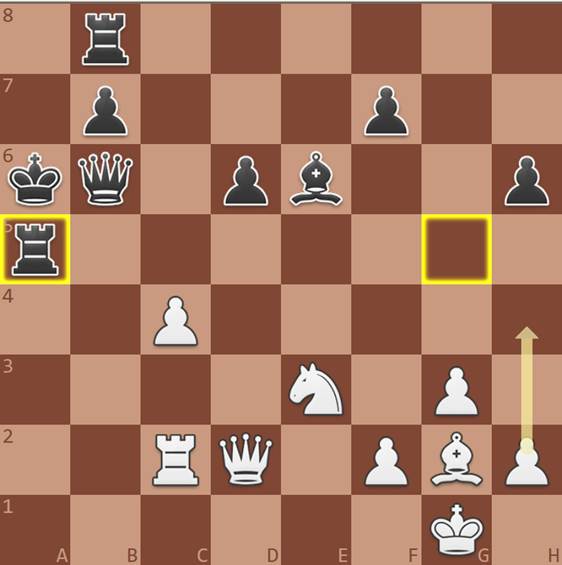
Game: Stockfish-Leela after 40…Ra5
In the course of the video, I tried to dissect why Stockfish gave this position – in which it appears to have good compensation for the exchange in the form of Black’s permanently exposed king but no more than that – an evaluation of 2.35. I won’t spoil the surprise completely, but the position of the black h-pawn on h6 specifically was worth about 2 points of evaluation!
It was yet another reminder of the dangers of relying on general factors as a complete explanation for surprising engine evaluations. This video popped into my mind when I came across this position from game 8 of the ongoing Season 28 TCEC Superfinal between – yes you’ve guessed it – Stockfish and Leela. The game is viewable at the TCEC here (https://tcec-chess.com/#div=sf&game=8&season=28)
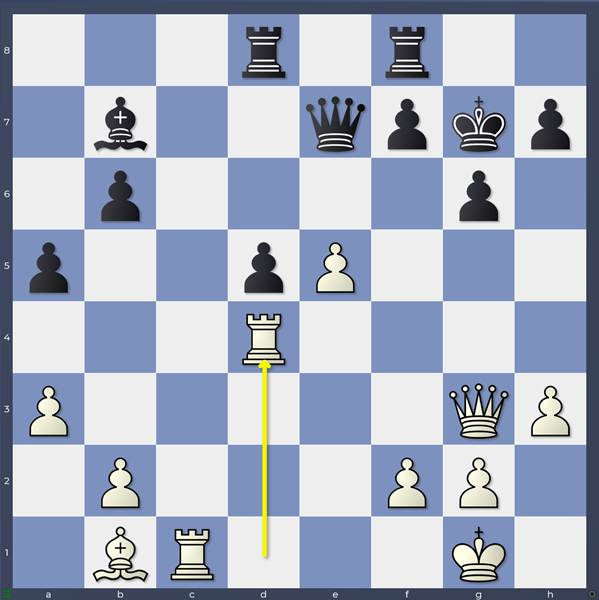
Game: Stockfish-Leela after 26.Rxd4
Stockfish’s evaluation here was already 1.81 and 1.85 after a few subsequent retreating and evading moves:
26…Rc8 27.Re1 Rc4 28.Rdd1
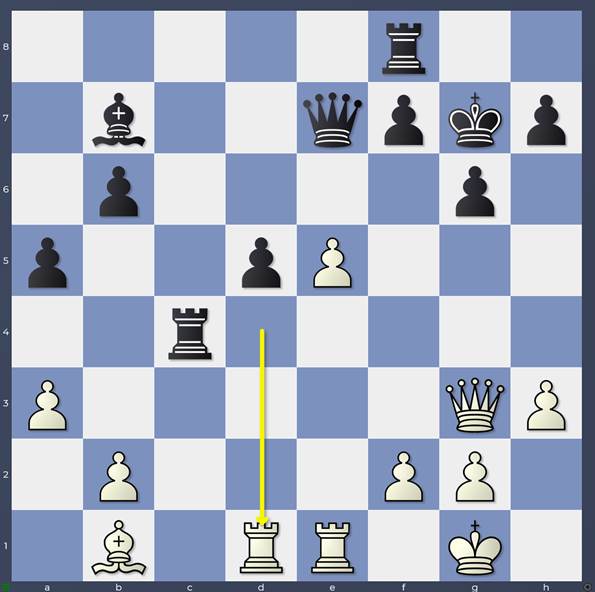
Game: Stockfish-Leela after 28.Rdd1
As you can guess, I was on board with the idea that White stands somewhat better in this position. The isolated d5-pawn is weaker than White’s e5-pawn while that same e5-pawn highlights dark-square weaknesses in Black’s kingside which might be the subject of a direct attack later. However, matters don’t seem too dramatic now, Black has the c-file and a – for now – active rook on c4. Moreover, Black is to move. Why are we saying that Black is lost here? The question intrigued me because the central pawn structure – white e5-pawn with a black isolated d5-pawn standing next to it – is an extremely common one. It can occur from all sorts of openings like the Sicilian, Ruy Lopez and the French to name but a few: any openings where Black breaks in the centre with …d5 and White replies with e5.
To orient myself better in the position, I searched for games with a similar structure and then ran blunder checks against all of them to get a general sense of where the turning points of these games had occurred. I then manually made a selection of key games. I’d like to share a few moments from these games:
Quesada Perez,Yuniesky (2642) – Balakrishnan,Praveen (2418) [C24]
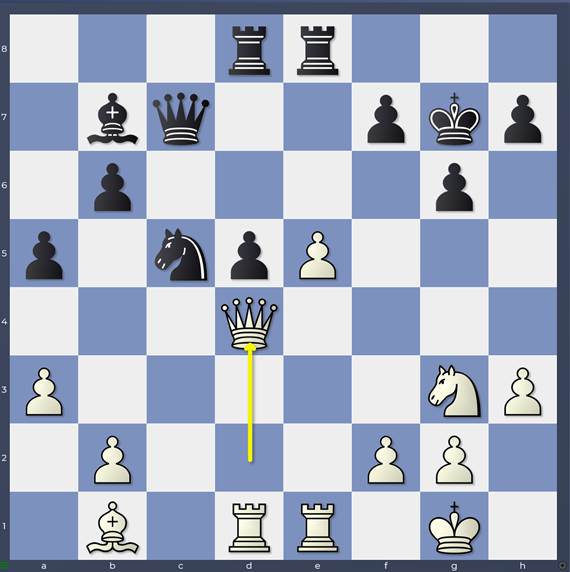
Game: after 27. Qxd4
This game started out in life as a Bishop’s opening: 1.e4 e5 2.Bc4. The engines give White a clear-ish advantage of 0.76. That evaluation was dependent on Black mixing things up with 27…Ne4. After the tamer
27…Ne6
however, the engine evaluations jump to 1.17!
28. Qg4 Kh8
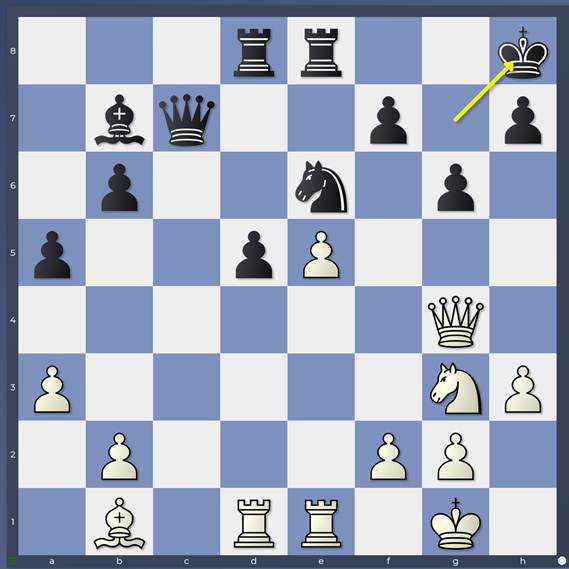
Game: after 28…Kh8
Here however, White made a significant mistake with
29. h4
which allowed the very sneaky
29…Qc4
when the position of the h-pawn on h4 adds an unexpected hobble in White’s path!
30. Qxc4
was what White resigned himself to, but after
30. Qh3 Nf4 is far from tempting while
30. Qf3 Qxh4 31. Qxf7 Bc6 gives Black more fun on the kingside than White!
30… dxc4
we are back to the dreaded 0.00 evaluation!
The engines prefer 29.f4
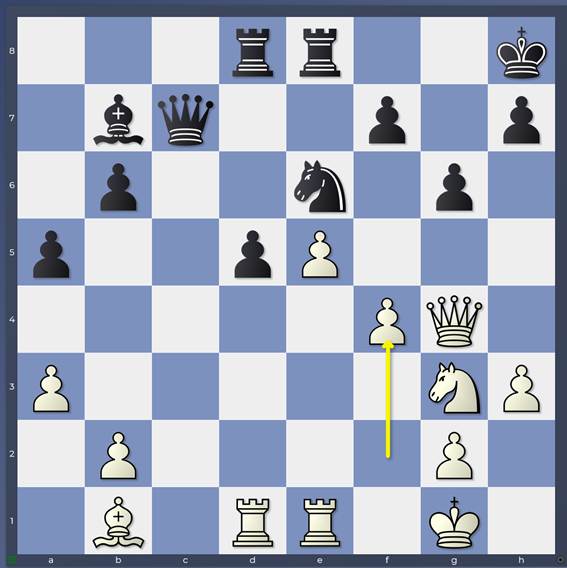
Line: 29.f4
This parries the exchange of queens and leaves White with all his attacking options.
Thejkumar,MS.. (2416) – Babu,N Sudhakar (2320) [D37]
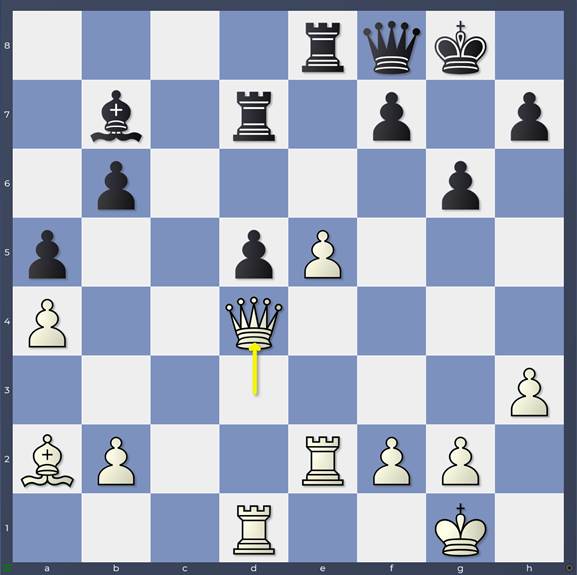
Game: after 30. Qxd4
Starting from a Queen’s Gambit Declined, we have a position very similar to our engine game. Black offered the exchange of queens with
30…Qc5
and after White’s reply
31. Kh2 Qxd4 32. Rxd4
the engines assess the position as 0.00. The only way to maintain a slight advantage (0.46) was
31. Qf4
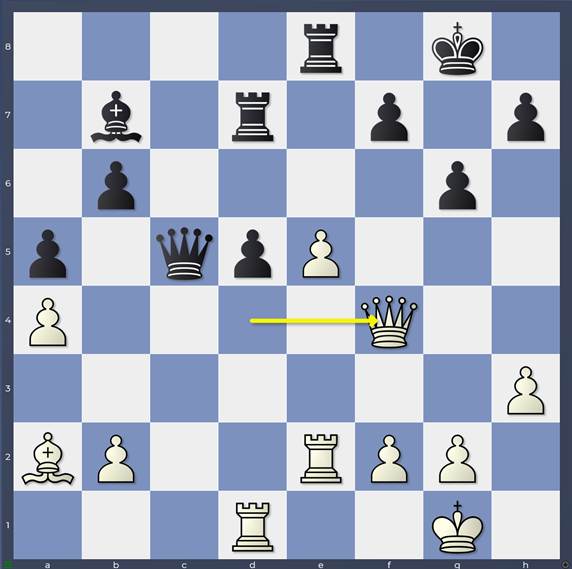
Line: after 31. Qf4
followed by h4-h5. It’s interesting to see that the engines recommend immediate queenside counterplay from Black: 31…b5 32. Rc1 Qb6 33. h4 bxa4 34. h5 Rc7 35. Rc3 Rxc3 36. bxc3 a3 37. h6
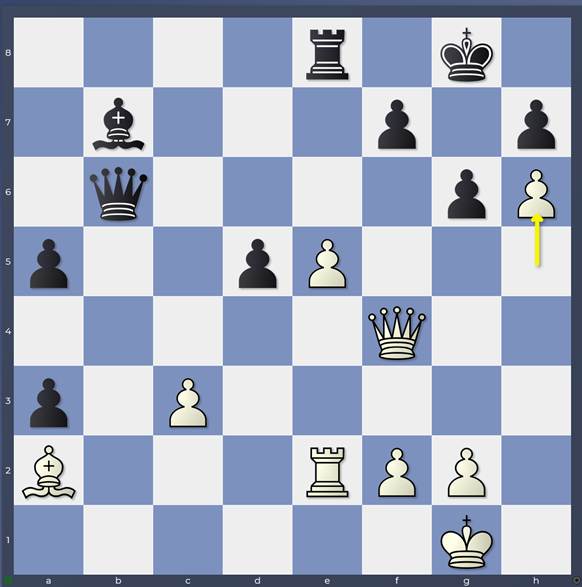
Line: after 37.h6
with some danger for Black’s king but also some capacity for distraction thanks to the advanced a-pawn.
Avrukh,Boris (2657) – Gofshtein,Leonid D (2546) [D15]
ISR-ch 34th Haifa (5), 07.12.2008
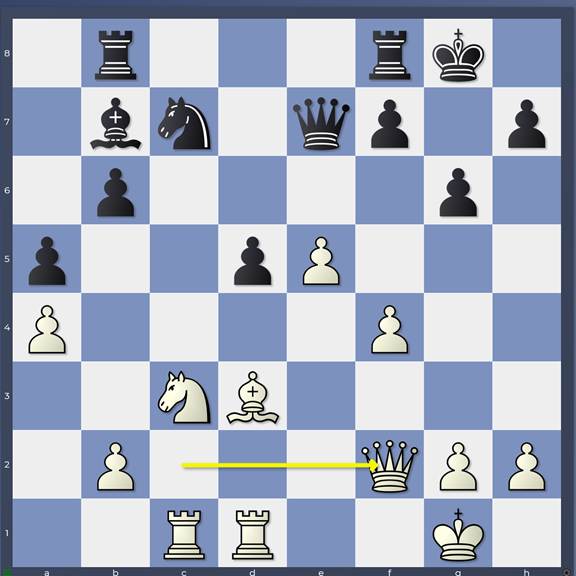
Game: after 22.Qf2
The Moldovian Slav led us this position where the engines give White a modest 0.49. Which rises however to 1.18 after Black’s next
22…Ne6
22… Qc5 is the key move, forcing the exchange of queens after which White’s better pawn structure and better-placed pieces give him a nice advantage but nothing like compared to the game.
23. Bb1
23. f5 gxf5 24. Bxf5 was the engine recommendation to meet 24… Qc5 with 25. Nxd5 Qxf2+ 26. Kxf2
24. Qxf5 Qh4 lets Black’s queen get irritatingly active while …d4 is the air – though I agree I’d also much rather be White!
23… Rfd8
Now we’re all the way to 1.96! After this last chance missing 23… Qc5 as 24. Nxd5 hangs the f-pawn after 24… Qxf2+ 25. Kxf2 Bxd5 26. Rxd5 Nxf4 while 24. f5 gxf5 25. Nxd5 Qxf2+ 26. Kxf2 Bxd5 27. Rxd5 Rfd8 leaves Black a tempo up compared to the line after 23.f5 as White has played Bd3-b1xf5.
24. Nb5
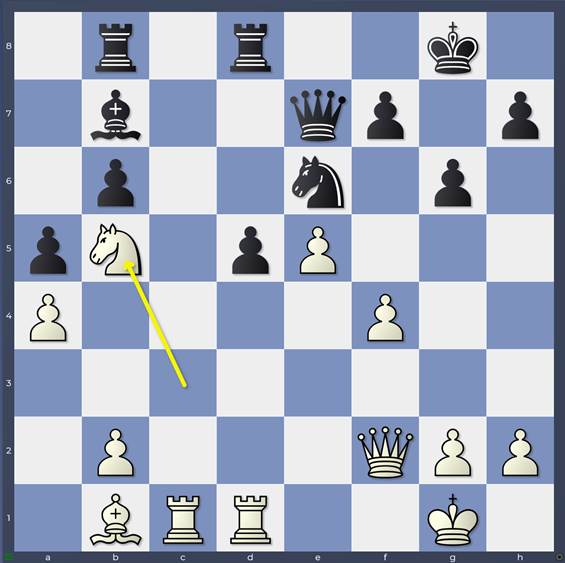
Game: after 24.Nb5
…Qc5 is no longer possible and Black’s counterplay is not obvious. here also White can make use of the strong outpost on d6 for his knight provided by the e5-pawn.
I guess you could say we have identified a theme! 😉 It seems that the position equalises greatly after the exchange of queens. And indeed, if we let the engines play out this position…
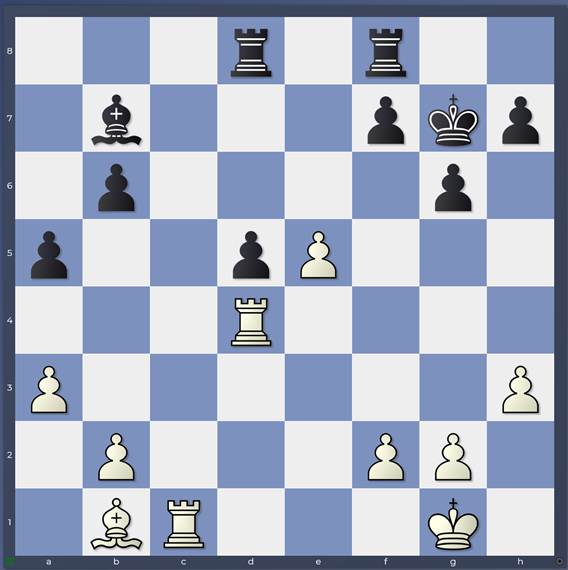
Position: Stockfish-Leela with queens removed, Black to move
…then we only seeing draws as White only has the advantage of the isolated d5-pawn to play for.
It’s clear therefore that the presence of queens is a significant factor in White’s advantage in these types of structure with this sort of material distribution. Which left me with a huge question. Just take a look at the next part of this Stockfish-Leela game:
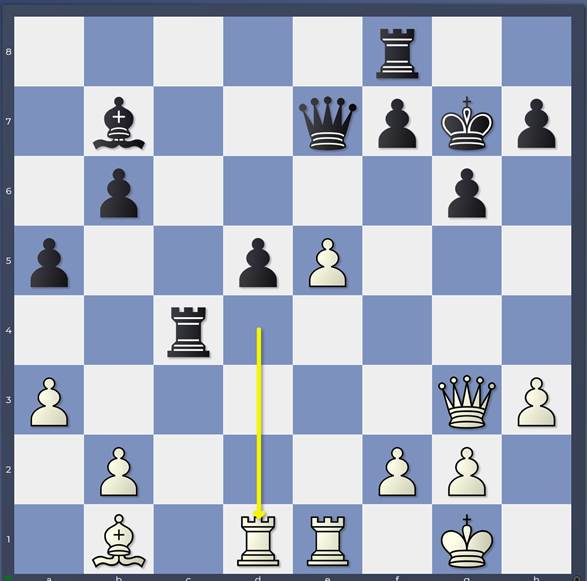
Game: Stockfish-Leela after 28.Rdd1
28…Rd8 29. Bd3 Rc5 30. h4
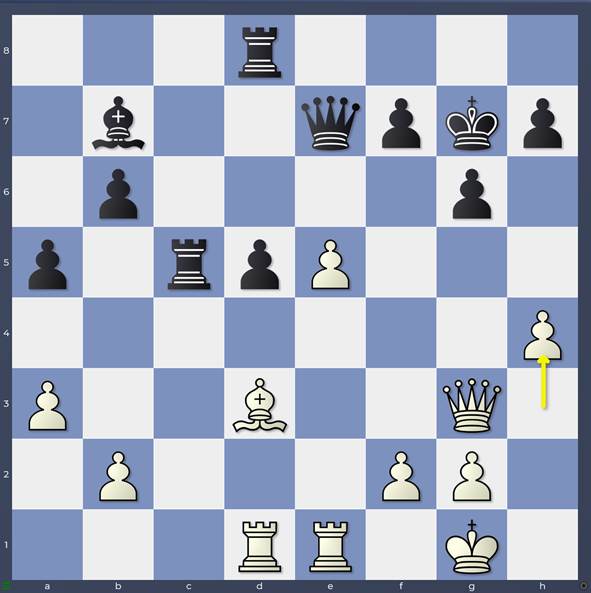
Game: Stockfish-Leela after 30.h4
30…d4 31. h5 Bd5 32. f4
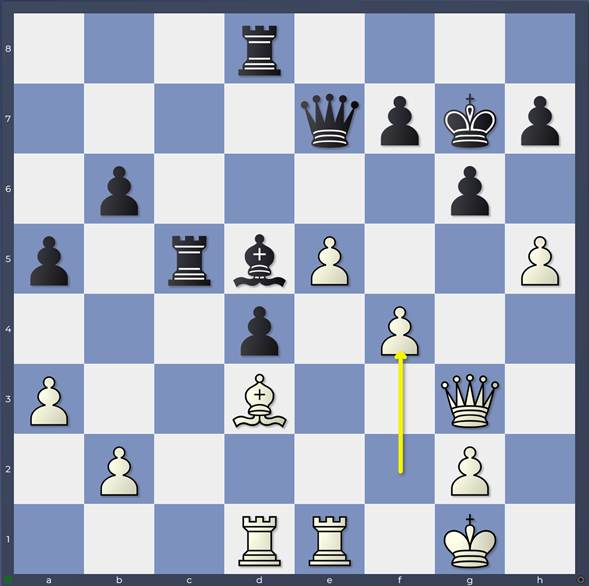
Game: Stockfish-Leela after 32.f4
32…Kh8 33. h6
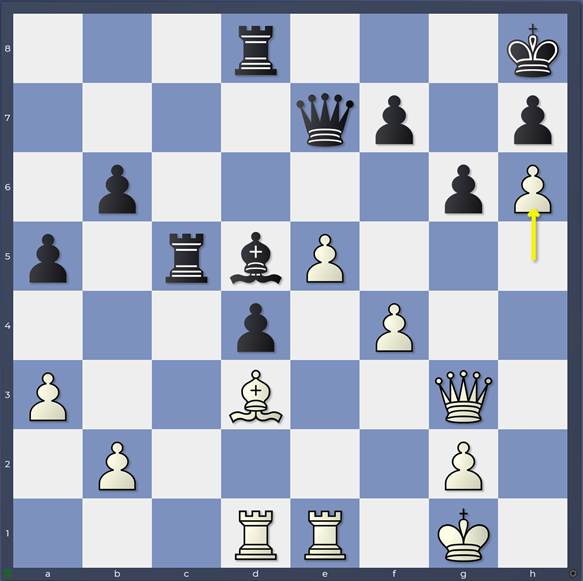
Game: Stockfish-Leela after 33.h6
Hammering that rook’s pawn into Black’s position!
33…a4 34. f5 b5 35. e6
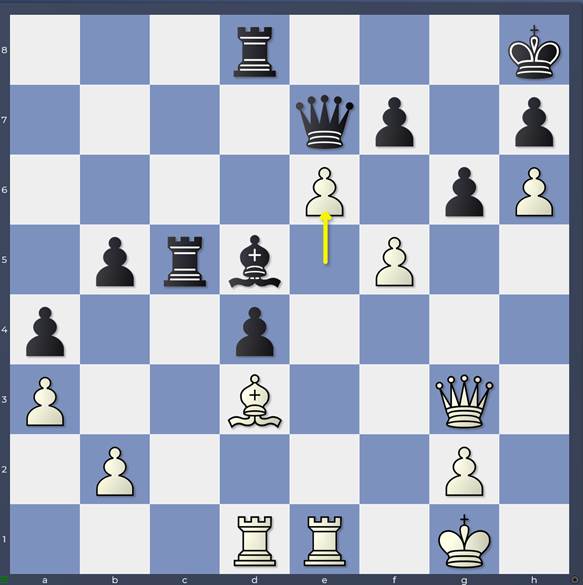
Game: Stockfish-Leela after 35.e6
That’s a proper kingside pawn storm!
Very impressive from Stockfish but I found it hard to understand why Leela had been rolled over like that. Bearing in mind our insight about wanting to exchange off queens, and also a general desire to hold back the advance of White’s kingside pawns, doesn’t 28…Qh4 seems extremely sensible?
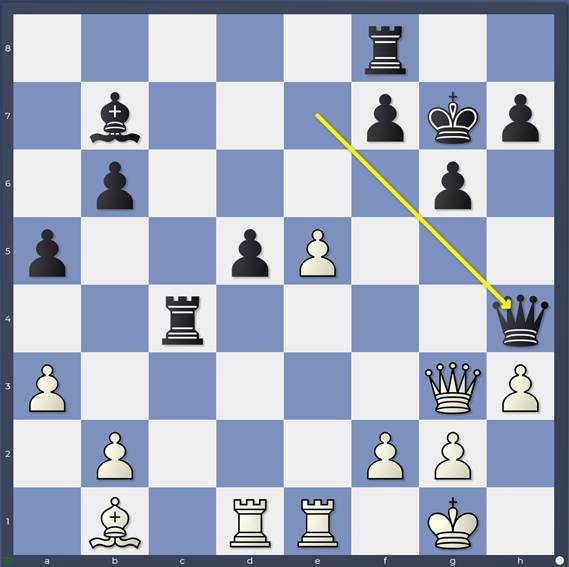
Line: Stockfish-Leela after 28…Qh4.
Indeed, if White were to exchange queens with 29.Qxh4 Rxh4 then Black would have better holding chances though the offside rook makes rook endings a bit awkward after 30.Ba2 attacking d5 and preventing the rook from re-entering the fray via c4. However, the key riposte to 28…Qh4 is….29.Qb3
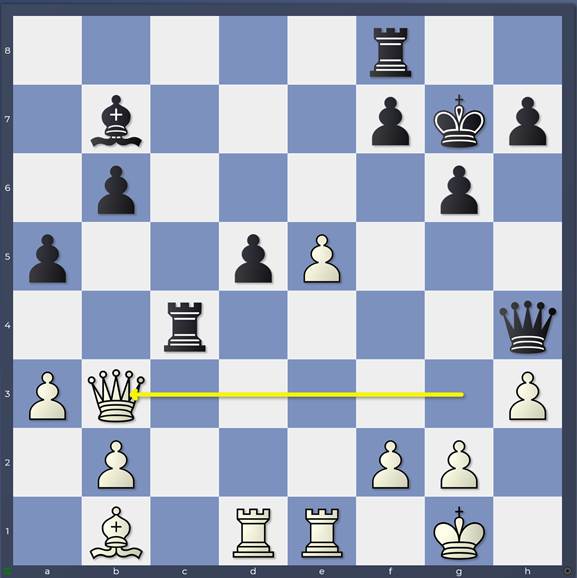
Line: after 29.Qb3
White hits the weak b6-pawn and forces Black’s queen back to square-1
29…Qd8
29…Rf4 30.Qxb6 defends f2
After which White exerts control with
30.Ba2 when one of my Torch-Stockfish engine games continued
30…Rc5 31. Qe3 Rc2 32. Qd4 Re8 33. Kh2 Bc6 34. Bb3 Rc5 35. Re3 Qe7 36. f4
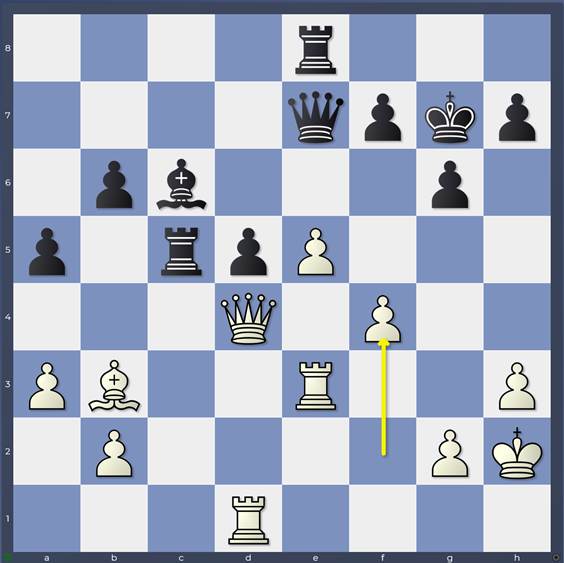
Line: after 36.f4
White was in control and won a long game. So once again, we are forced to conclude that White’s advantage is a combination of the presence of queens giving him powerful attacking potential allied to the weakness of a single black pawn on the opposite wing as far away from the black king as could be!
Because of course, this position
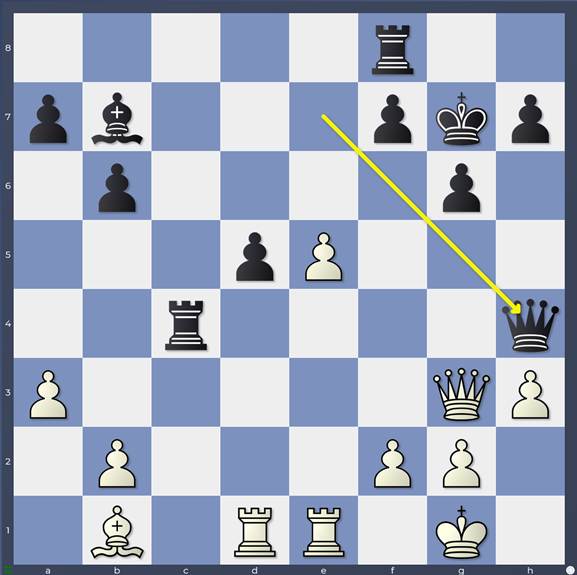
Stockfish-Leela with the a5-pawn put back to a7, White to move
– with the pawn safely back on a7 defending the b6-pawn and keeping the queenside nice and solid – is just a slight advantage for White (not pleasant for Black to defend, but the engines manage every time)
I got particularly attracted to this position as a result of an interview with a PhD student finishing her dissertation on the historical evolution of AI and computers and chess. She cited a few earlier interviewees who said that to be really useful tools, engines needed to be able to explain their moves in natural language. I wasn’t in agreement and I think that this sort of example explains why. The point is more that to explain a position properly to a human player, an engine has to be able to displace itself into our chess view: that of a very weak calculating engine with at times freakishly prescient powers of visualization. For me, the crucial point to understand and evaluate the position accurately (even more so from a distance) is to understand the response to 28…Qh4. If I understand that move is no good, then I can easily visualize the future state of the game. It’s no problem to visualise driving back the rook from c4 and then throwing forward my kingside pawns without needing any variations at all. So to truly help me, an engine would need to understand my need in the position – which is obviously nothing like what the engine – possessing a rather different skill set – prioritises to make its own decisions. I guess what I’m saying, is that there is going to be a role for human trainers of promising juniors for some years to come!


